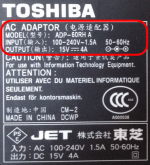coleasterling said:
But I'm looking to use this to power the low voltage systems on my bike, not charge the cells. I need to maintain HV/LV isolation and there aren't many options in terms of straight DC-DC converters that are under 100W.
The unit you have selected will work - but a bit suboptimally for common automotive/motorcycle lighting. It's a 12V supply which is pretty low for automotive accessories which are not really 12V at all.
Conventional automotive stuff is really designed to work with voltages in the range 13.8-14.4V as produced by the alternator - not as supplied by the battery at rest. In point of fact, cars will run fine at 15V or more, although battery life is shortened because of the high terminal charging voltage. Common lighting and accessories will certainly operate at the euphemistic '12V', but lights will be dimmer, etc. It's essentially the difference in headlight intensity before and after you start the engine on your car.
Laptop supplies are a nice alternative and come in some handy voltages. A convenient choice is the
Toshiba ADP-60RH power supply. This is a 15V 4A supply that is readily available (e.g.
eBay search). There are threads on ES about this and similar units, including this one from 2007 by fechter
"Cheap DC-DC converters for over 60v input.". I've tried this particular Toshiba model and it works nicely, is isolated, and waterproof to boot. At 15V it's fine for automotive stuff and will punch up your lighting noticeably over the 12V supply you linked.
That said, it you are using more elaborate LED lighting with a supporting buck converter and/or current regulator, then input voltage really won't have a visible effect.

FWIW: I run a bike on 16V using a strobed DOT Optronics LED tail/brake light on the back and it's markedly brighter than another bike with the same light and a more conventional automotive 13.5V converter.



